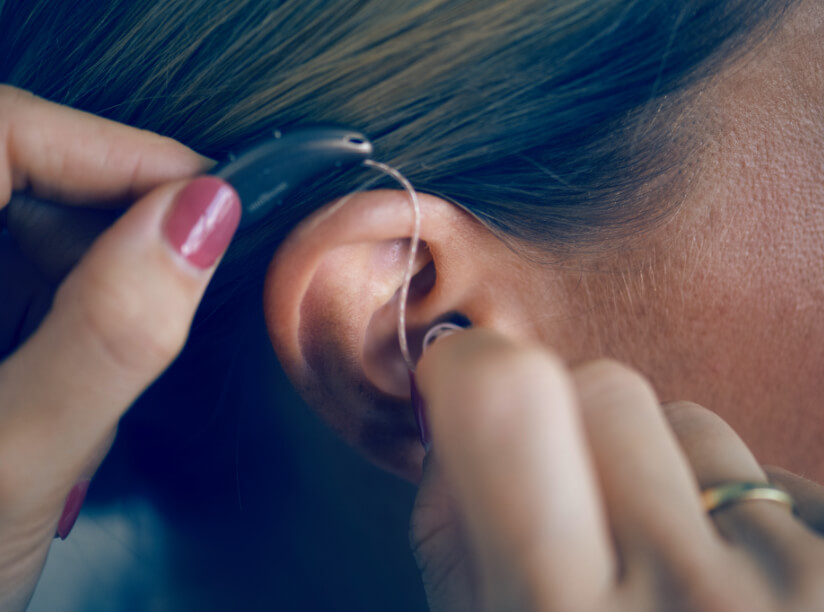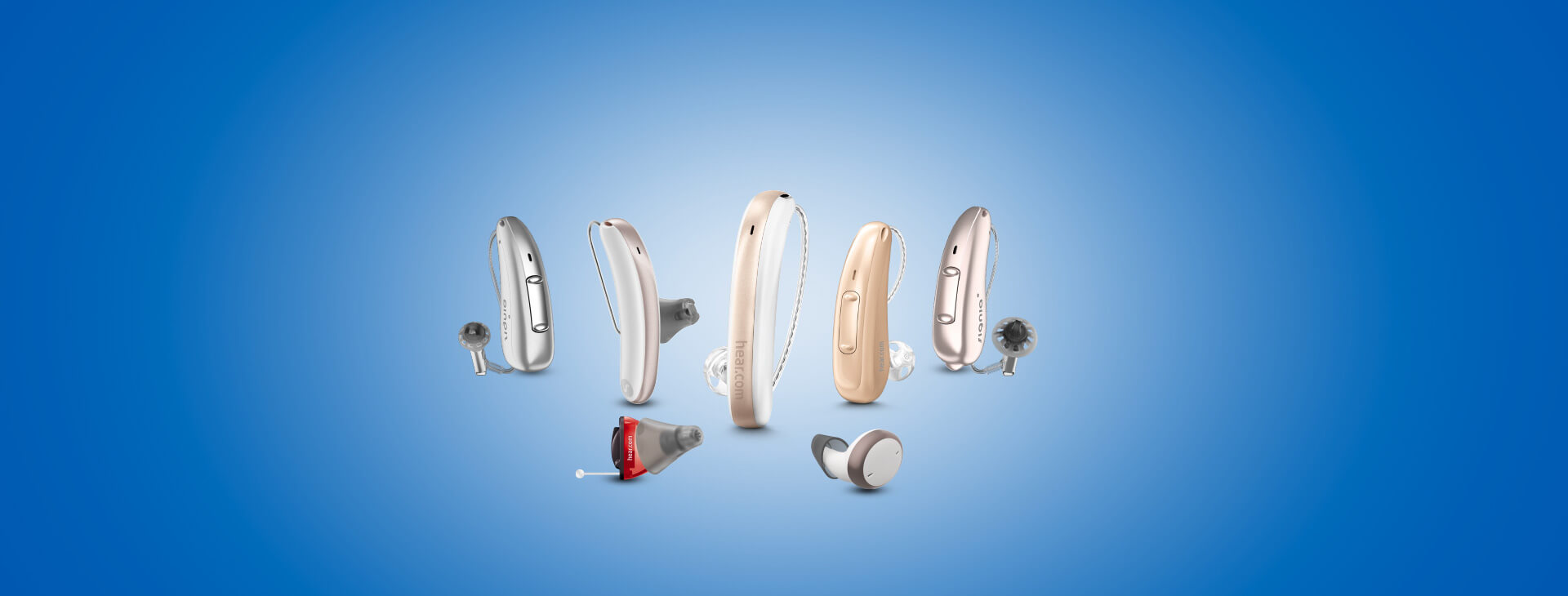
Smart hearing aids from hear.com - world's leading hearing care provider
Which hearing aids are the best for me?
Today’s hearing aids are small, high-performance computers that combine cutting edge technology with an elegant design. The smallest in-the-ear (ITE) devices are no bigger than a coffee bean and disappear almost invisibly into the ear canal. Behind-the-ear (BTE) hearing aids are typically more powerful, have more functionality and sit inconspicuously behind the auricle. Hearing aids of any form-factor can reduce annoying background noise and enhance speech clarity.
Today, more than one in six people have hearing loss that can be combated with hearing aids. From the age of 50, 1 in 3 people benefit from hearing aids in order to cope with difficult conversational situations with background noise.
Table of Contents
- What kind of hearing aid models are there?
- Which hearing aid is right for your needs?
- How long does a hearing aid last?
- In-the-ear hearing aids
- Behind-the-ear hearing aids
- Hearing aid batteries
- Earmolds
What kind of hearing aid models
are there?
When it comes to hearing aid designs, there are two main categories:
- In the ear hearing aids (ITE
- Behind the ear hearing aids (BTE)
ITE hearing aids are inserted inside the ear canal and are therefore almost invisible. Variants of ITE hearing aids are available that are custom-made for individual users’ ear canal and are therefore as unique as their fingerprint. Prefabricated variants in standard sizes are also available, and these come encased in a soft silicone jacket that adapts to the ear canal.
BTE hearing aids consist of two parts. One part sits behind the auricle. This small, inconspicuous device is packed with microphones and contains the battery. Sound output from BTE hearing aids is directly inside the ear canal, with audio being transmitted via a thin, transparent hose or with a transparent cable. Thanks to their design, behind-the-ear hearing aids combine the greatest possible range of functions with an inconspicuous look. Depending on personal preferences and the type of hearing loss, they are each suitable for different people.
In-the-ear hearing aids
Almost invisible aids!

ITE hearing aids almost completely disappear inside the ear canal, making them a perfect companion for any clothing or headgear. ITE hearing aids have a very low chance of accidentally falling or sliding out, making them excellent companions for sporty activities. As there are no sweat glands in the ear canal, sweating will not be a problem either. These hearing aids easily manage natural directional hearing by leveraging the refraction of sound in the auricle.
Due to their incredibly small design, ITE hearing aids are best suited to combating mild to moderate hearing loss. ITE hearing aids also seal off the entire ear canal, which can lead to poor ventilation and an overemphasis of one’s own voice.
Behind-the-ear hearing aids
Powerful and discreet

BTE hearing aids are available on the market for almost any type of hearing loss, including severe hearing problems. In the case of mild to moderate hearing impairment, the loudspeaker of a BTE hearing aid can be used in the ear canal with a small umbrella or an open, custom-made earmold. As a result, the ear canal is always well ventilated and external noises can naturally reach the eardrum in addition to amplification from the BTE device.
Depending on the variant and configuration, BTE devices are capable of functioning as wireless headphones and can connect to smartphones as well as TVs.
How long does a hearing aid last?

Depending on your usage and lifestyle, hearing aids can typically last up to 7 years without much difficulty. Of course, this varies from hearing aid to hearing aid, with each model having its own unique lifespan.
Which hearing aid is right for your needs?

Both in-the-ear and behind-the-ear hearing aids are available in several price and capability brackets. You need to get hearing aids that suit:
- How active your lifestyle is
- Your daily use case
- Fit your individual requirements
Even a basic device can be well suited for daily tasks such as conversations or walks. If you are very active, then higher end variants may be more useful which possess the very latest technology like automatic 360° hearing, adaptable speech recognition and bluetooth functionality.
Hearing aid batteries
Hearing aids are either powered by replaceable batteries or rechargeable ones. Batteries last for several days and have to be changed by the user. You should always have a set of spare batteries. Batteries can be found at your hearing care clinic as well as supermarkets. You may also order batteries online, but be sure to double check if they’re a correct match for your hearing aids!
Hearing aids with rechargeable batteries can be charged any time, and should be charged overnight in special charging stations. These typically last an entire day. Under heavy usage, such as making long phone calls and streaming TV audio via bluetooth you may need to recharge them faster.
Earmolds
These are custom earpieces for hearing aids. A cast of the ear canal is taken to produce it. An earpiece is then produced individually for the owner of the hearing aid using this shape. Earmolds have multiple advantages: it is virtually guaranteed that the tiny speaker inside your ear is always the same distance from the eardrum. Umbrellas, on the other hand, can slip and even a few millimeters here or there can significantly impact the volume and overall sound of the hearing aid.
Earmolds prevent too much sound from escaping from the ear canal, where it can interfere with the recording of ambient sounds by your hearing aid. Earmolds ensure that hearing aids fit snugly and such a scenario does not happen.

